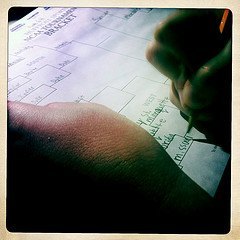
Time and time again we are told that student loans can’t be discharged during bankruptcy. While this will be the case for the vast majority of people, there are some limited exceptions to the rule.
The exceptions date back to a federal appeals court decision from 1987, in which the so-called Brunner test was born. Debtors must show that they are experiencing “undue hardship” to have their student debts discharged, and it is the definition of “undue hardship” that was given some definition in this 1987 decision.
The Brunner rule mandates that debtors must meet three criteria to be able to have their students debts discharged during bankruptcy. Firstly, that the debtor is unable to have a minimal standard of living if they were to repay the debt. Secondly, that the first criterion is likely to hold true for a significant period of time. And, thirdly, that the debtor has tried in good faith to repay the loan.
Student loans were first treated differently from other forms of debt after a law was passed by Congress in 1976. This law established that “undue hardship” must be demonstrated, but it was left up to the courts to decide how this would be interpreted. Whether you need a bankruptcy lawyer in LA or anywhere else in the country, the same applies.
According to Lawyers.com, meeting the Brunner test is very difficult. It summarized the results of a National Association of Consumer Bankruptcy Attorneys (NACBA) survey, which found that the majority of attorneys have few clients that would be eligible. Of those who are eligible, few would be able to afford the expensive litigation involved.
The Brunner rule “calls on judges to examine whether debtors have made a good-faith effort to repay their debt by trying to find a job, earning as much as they can and minimizing expenses. Then comes an examination of a debtor’s budget, with an allowance for a ‘minimal’ standard of living that generally does not allow for much beyond basics like food, shelter and health insurance, and some inexpensive recreation,” writes the New York Times. “The third prong, which looks at a debtor’s future prospects during the loan repayment period, has proved to be especially squirm-inducing for bankruptcy judges because it puts them in the prediction business.”
Judges put the onus on the debtor to show that their future prospects make it unlikely that they will be able to repay the debt. In the New York Times story, one lawyer explains how he represented a visually impaired client who was receiving disability. The court told his client that, despite his situation, he would be given two years to find work. The lawyer was shocked by the decision, decided not to charge his client anything, and called an end to taking on these cases.
Discharging student loans is a separate legal process from a typical bankruptcy. This limits the number of cases that go through the courts, and makes it an additional burden for the debtor. It is estimated that fewer than 1000 hardship cases go through the courts each year.















